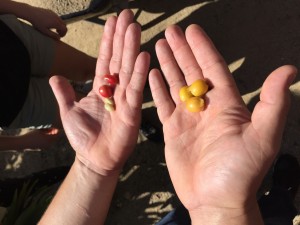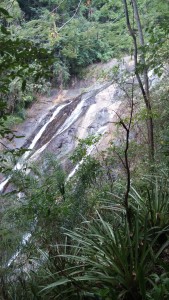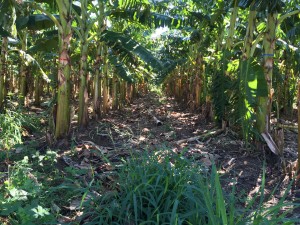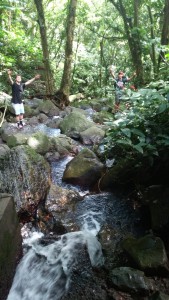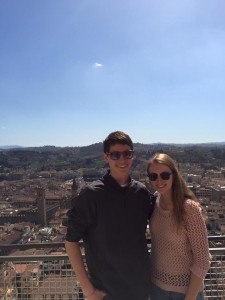Having lived in Illinois all of my life, upon coming to Puerto Rico it was relatively easy to spot differences between the two, but the longer I have been here, the more and more I notice. The most apparent difference, in my opinion, would be the typical kind of plant and wildlife that is accessible to people. While in Illinois/Chicago, the nearest types of plant and wildlife are those found in a plain ecosystem, such as wheat and corn, along with deciduous trees and woodlands animals. However, in Puerto Rico, most of these are not present. There are far more tropical plants, such as plantain trees, coffee plants, and palm trees. While in Illinois, coconuts are only obtainable at supermarkets or specialty shops, you can literally walk down the beach and find coconuts that are ready to be opened. That would be unheard of in Illinois. Likewise, in Illinois forests you have the possibility of coming across many squirrels and small wildlife that is very uncommon in Puerto Rico. The types of animal life found at each place is quite different. There are hermit crabs, normal crabs, a surprisingly high number of stray cats, and many low hanging trees at beaches, while in Illinois, there are almost no trees with the ability of growing in the sand. For that matter, sand itself is difficult to come across in Illinois, seeing as there is only one river and a section of lake water to break down rocks and dirt to become sand, while in Puerto Rico, the entire island is surrounded by ocean (obviously) and water breaks down many things besides rocks, since there are many coral reefs about the island. The waves crashing upon the rocks are also far larger in Puerto Rico than they are along Lake Michigan, so the rocks and coral are broken down far faster than the rocks in Illinois are by the lake.
Another notable difference between the two locales is the topography and landscape. In Illinois, the landscape is primarily flat, and if there are hills, they are gently rolling and hardly notable. Speaking of, many of the counties in Illinois don’t even have names for their highest points since they are so easy to look over. Meanwhile, in Puerto Rico, there is an abundance of mountains and valleys, and even some marsh and desert-like areas. Granted, along the Mississippi River in Illinois there is some similar marshy land, the highest point visible anywhere near the river is actually a rock. In Puerto Rico, you can see rivers that travel from the tops of mountains down waterfalls and rushing streams, while in Illinois the Mississippi generally flows lazily, though there are occasional rapids. One of the coolest experiences I’ve had since coming to the island was at the ecolodge we stayed in one night, which was 5 minutes away from a waterfall/rapids area that was easy enough to climb, and had incredible fresh water pools that were stunning.
Another delightful difference between the Illinois and Puerto Rico is the food that the locals eat, both themselves and relative to each other. In Illinois, there is quite a bit of diversity statewide in terms of what the locals eat. While all over the state, almost everyone enjoys steaks and corn on and off the cob, in Chicago, there are many niche foods such as Italian Beef, Deep Dish Pizza, Breaded Steak Sandwiches, and Giardiniera that can only be found there. Puerto Rico, while quite different from Illinois, eats relatively similar things across the entirety of the island. Plantains play a huge role in the local cuisine, being in multiple items such as mofongo and tostones, whilst also being sliced and fried up quickly. The only item comparable to that in Illinois would be corn, and it’s not used in nearly as many ways. Furthermore, locals incorporate seafood into their cuisine far more extensively than Illinoisans, seeing as they are surrounded by fish, while they are not easily accessible to people in Illinois. 